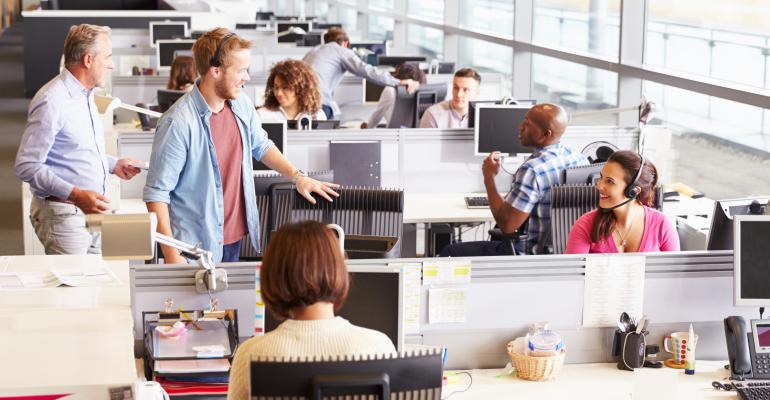The COVID-19 pandemic has upended daily life and economies around the world. Many wonder what a post-Coronavirus world will look like, how it will affect life and work going forward.
The lockdown has already cost many workers their jobs, and it’s likely to get worse, according to Goldman Sachs economists, who predict that U.S. GDP will plunge 34 percent over the next three months and unemployment will surge to 15 percent.
But while office workers who are temporarily working from home are thankful they still have jobs, many wonder how the psychological implications of the pandemic might change their preferences once the crisis is over.
For example, global architecture and design firm Gensler is currently conducting a survey of office workers about “how working from home due to the coronavirus may change the way we work” when we return, according to Janet Pogue-McLaurin, Gensler principal and global leader of its workplace practice area.
Pogue-McLaurin suspects that the psychological impact of social distancing will carry over to the workplace after the pandemic ends, with office workers concerned about their safety, health and a clean environment.
“There will be a focus on ‘de-densifying’ the workplace to create more space between workers, which could increase demand for office space unless employers offset on-site time with the option of working from home,” she notes.
In addition, “Employees will want to know what is being done to provide a safe place to work.” Cleaning protocols will intensify and unassigned and dynamic seating may go away. More landlords may install air filtration systems that sterilize the air, and certification programs like Fitwell and WELL may gain in importance to make people feel better about being at the office, Pogue-McLaurin adds.
Another piece of the puzzle is that most office leases are long-term and even once employees begin returning to the office, tenants may struggle to sublease their space, given current macroeconomic conditions, says Scott Homa, senior director of office research with real estate services firm JLL.
“Companies may look to redesign spaces, emphasizing ‘social distancing’ as the best scenario,” he notes. Once the economy begins to recover and companies assess the efficacy of remote work, it’s possible that drops in collaboration or employee productivity will lead companies to once again grow their physical office footprints.
Meanwhile, the psychological impact of social distancing could have a devastating impact on co-working spaces, according to Pogue-McLaurin. WeWork is already experiencing a decline in usage, according to reports.
“It’s one thing to touch things family members or close teammates touched, but people may be reticent to go back to a co-working space with people they don’t know—concerns about safety rise,” she notes.
Homa agrees with that assessment: “In terms of co-working space, we're likely to experience a severe drop in demand from all user segments, especially freelancers and small businesses. Larger organizations are also exploring ways to reduce occupancy costs and will likely shed co-working memberships as they work to aggressively rein in costs.”
Longer term, as the economy rebounds, Homa forecasts there will be strong demand for pre-built spaces and short-duration lease terms. “This should improve demand for spec suites and co-working spaces.”
He adds, however, that many co-working spaces will need to be redesigned to accommodate the new “anti-viral workplace,” including de-densification measures that allocate more square footage per member.
“Companies are currently taking a wait-and-see approach with respect to their space plans, given the high level of uncertainty, “ Homa says. “The stickiness of work-from-home initiatives is purely speculative at this point and will hinge on the type of work being performed and the ability of employees to be productive in remote settings.”
Pogue-McLaurin also suggests that the workplace may change in other ways. “Tenants may want their own elevators, and employees may want assigned seating to prevent spreading germs. There may be more virtual collaboration now that people are getting used to using tools like Skype and Zoom, she says, suggesting that there are likely to be fewer face-to-face meetings, with those that do take place reserved for special events.
Gensler’s new workplace survey will ask workers what they miss most about working in the office and seek to discover which amenities are most valued, Pogue-McLaurin says. “People want to feel safe, valued, healthy and empowered, so we have to create spaces that provide that. The key thing is a well-designed workplace is where people want to be, despite the commute, and I think the workplace will matter more than ever when this is over.”





